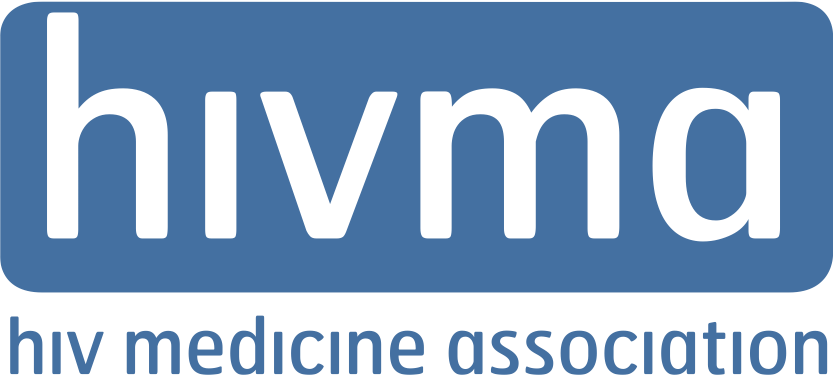Testimony for the Record to the House Appropriations Subcommittee on Labor, Health and Human Services, Education and Related Agencies Regarding Fiscal Year 2020 Appropriations for Federal HIV and Related Programs
Submitted by W. David Hardy, MD, Chair of the HIV Medicine Association (HIVMA) April 8, 2019
The HIV Medicine Association (HIVMA) of the Infectious Diseases Society of America (IDSA) represents nearly 6,000 physicians, scientists and other health care professionals on the frontlines of the HIV epidemic. Our members provide medical care and treatment to people living with HIV in the U.S. and globally, lead HIV prevention programs and conduct research that has led to the development of effective HIV prevention and treatment options. For the FY 2020 appropriations process, we urge you to increase funding for the Ryan White HIV/AIDS Program at the Health Resources and Services and Administration (HRSA); increase funding for the Centers for Disease Control and Prevention’s (CDC) HIV, hepatitis and STD prevention programs; increase investments in HIV research supported by the National Institutes of Health (NIH); appropriate new funding to support the “Ending the HIV Epidemic” Initiative; and heighten our response to the opioid epidemic including the infectious diseases consequences associated with it and addressing workforce shortages by funding the SUPPORT Act’s Loan Repayment for Substance Use Treatment Disorder Treatment Workforce Program at least at $25 million as authorized. Though we face continued challenges in HIV prevention and care, we are in strong support of the administration’s recognition that we have the tools to end the epidemic. Adequate funding increases for relevant federal agencies are needed now more than ever to achieve these goals.
Our investments in evidence-based public health approaches to HIV prevention, treatment, care, and research over the last 35 years have produced groundbreaking scientific discovery, saved millions of lives, and offset tremendous costs to the healthcare system by preventing new infections. We know that early diagnosis and access to HIV treatment allows persons with HIV live healthy and productive lives, is cost-effective, and directly benefits public health by stopping HIV transmission when people living with HIV maintain viral suppression. Despite our progress, in recent years, new HIV diagnoses have stalled rather than declined. Just over half of people living with HIV are benefiting from treatment,i and disparities among vulnerable populations has widen. The funding requests in our testimony largely reflect the consensus of the Federal AIDS Policy Partnership, a coalition of HIV organizations from across the country.
Health Resources and Services Administration – HIV/AIDS Bureau:
To continue providing comprehensive, life-saving treatment and care for over 550,000 people living with HIV, and to begin bringing many more people into care through the Ending the HIV Epidemic Initiative, we request a $215.8 million increase over FY19 levels for the Ryan White HIV/AIDS Program for a total of $2.535 billion. At this critical time of launching the “Ending the HIV Epidemic” in the U.S. initiative, bolstering the Ryan White Program with new funding is necessary to build workforce capacity and expand access to quality, expert care for people diagnosed with HIV.
In particular, HIVMA urges an allocation of $225.1 million, or a $24 million increase over current funding, for Ryan White Part C programs. Part C-funded HIV medical clinics are struggling to meet the demand of increasing patient caseloads. The team-based and patient-centered Ryan White care model has been highly successful at improving clinical outcomes for a population with complex healthcare needs. Persons with HIV who receive Ryan White services are more likely to be prescribed HIV treatment and to be virally suppressed. Between 2010 and 2017, the viral suppression rate for all Ryan White clients increased from 70% to 86%.ii We also know that the annual health care costs for persons who are diagnosed late and/or do not have reliable access to care and treatment are nearly 2.5 times greater than that of healthier persons with HIV.iii Increased Ryan White Part C funding also is urgently needed to meet the increasing demand for substance use disorder and mental health treatment at Ryan White clinics.
We also recommend funding the administration’s request of $70 million in new funding for the “Ending the HIV Epidemic” initiative, which will bolster Ryan White services and providers in the 48 counties, Washington DC, San Juan, and seven states in preparation of bringing thousands of newly diagnosed people with HIV into quality care and with adequate support services.
Health Resources and Services Administration – Bureau of Primary Health Care:
We recommend appropriating $50 million in new funding for HRSA’s Community Health Center program for the End the HIV Epidemic initiative. The administration’s budget proposes repurposing $50 million existing dollars for community health centers in order to scale up pre-exposure prophylaxis (PrEP) services for people at high risk of acquiring HIV, which is a critical intervention and is a focal point of the Ending the HIV Epidemic initiative. Community health centers, especially those already funded by the Ryan White Program, are critical entry points for people with limited resources or without other sources for care to get tested and initiate PrEP. CDC estimates only 10% of those who could benefit from PrEP have been prescribed PrEP, and those who need it most – Black and Latino gay and bisexual men at high risk – are prescribed it at a much lower rate.iv Scaling it up in the targeted counties and states in the most affected populations is critical to ending the HIV epidemic. Without a vaccine on the horizon, PrEP for HIV is our most effective prevention tool.
Centers for Disease Control and Prevention – National Center for HIV/AIDS, Viral Hepatitis, Sexually Transmitted Diseases, and Tuberculosis Prevention:
In order to meaningfully address the HIV, viral hepatitis and STDs syndemics, as well as the co-occurring crisis of addiction and injection drug use associated with the opioid epidemic, we request a $496 million overall increase above FY19 levels for a total of $1.628 billion.
For the Division of HIV/AIDS Prevention (DHAP), we request a total of $1.012 billion, which is an $224 million increase over FY19 levels. DHAP conducts our national HIV surveillance and funds state and local health departments and communities to conduct evidence-based HIV prevention activities. New annual infections recently fell below 40,000 for the first time in decades, but since then our outcomes have stagnated.v CDC’s high impact prevention strategies work, but with flat funding, we cannot reach more people at risk for HIV. We also recommend appropriating the $140 million requested by the administration for the “Ending the HIV Epidemic” initiative, which will allow CDC to jumpstart new efforts to scale up HIV testing, implement PrEP programs, and link people newly diagnosed with HIV immediately to HIV care.
Additionally, we urge the appropriation of the requested $58 million for the CDC to fund surveillance and programming to monitor and prevent opioid-related infectious diseases. The proportion of new HIV and infections due to injection-drug use has grown in recent years and new viral hepatitis infections have increased significantly.vi Bacterial infections like endocarditis still have no national surveillance, but anecdotally our members report significant increases in these costly infections.
Policy – Syringe Service Programs: HIVMA applauds the subcommittee’s work in advancing report language that allows for the use of federal funding for syringe services programs as an important prevention and public health intervention. We support its continuation and expansion to include the purchase of syringes and other equipment.
For the Division of Viral Hepatitis (DVH), we request a total of $134.0 million, which is a $95 million increase over FY19 levels. Last year, CDC announced that in 2016, there were over 41,000 new cases of hepatitis C, a 21% increase over 2015 and a 350% increase since 2010. New HCV and hepatitis B infections are being driven by injection drug use throughout the country, and especially in regions hardest hit by the opioid epidemic.vii A significant increase in resources is needed so that CDC can adequately fund and support viral hepatitis education, prevention, testing, and surveillance activities. With existing resources, the United States is simply not equipped to monitor viral hepatitis cases and the impact of these infections, much less appropriately cure and sufficiently prevent new infections.
For the Division of STD Prevention (DSTDP), we request a total of $227.3 million, which is a $70 million increase over FY19 levels. Last year, CDC again reported the greatest ever number of new STD cases, with over 1.7 million cases of chlamydia, 555,000 cases of gonorrhea, and over 30,000 cases of syphilis, including 918 cases of congenital syphilis (mother-to-child transmission). This is a national public health emergency, and should be declared as such. CDC and jurisdictional health departments need a significant investment of new resources to expand local public health capacity to conduct screening, linkage to treatment, and partner services.
National Institutes of Health – Office of AIDS Research:
In order to continue funding 21st century discoveries that will help us end the HIV epidemic, such as improved HIV prevention modalities and treatment options, we request an overall FY20 budget level of at least $2.5 billion above FY19 levels for the National Institutes of Health (NIH). Consistent with the most recent Trans-NIH HIV/AIDS Research Professional Judgment Budget for Fiscal Year 2020, we ask that at least $3.502 billion be allocated for HIV research in FY20, an increase of $457 million. This level of funding is vital to sustain the pace of research that will improve the health and quality of life for millions of people in the U.S. and in the developing world. Flat funding of HIV research since FY15 threatens to slow progress toward a vaccine and a cure, erode our capacity to sustain our nation’s leadership in HIV research and innovation, and discourage the next generation of scientists from entering the field.
Indian Health Service – Eliminating HIV and Hepatitis C in Indian Country:
We support and urge the appropriation of the $25 million in new funding for IHS to establish a new HIV and hepatitis C elimination initiative as part of the Ending the HIV Epidemic initiative.
Conclusion:
We have the tools to end the HIV epidemic in the U.S. To accomplish this, we must substantially increase funding to support comprehensive prevention and care programs, grow a qualified workforce and create a healthcare system which routinely screens people for HIV and provides access to those living with HIV uninterrupted access to care and treatment. In addition, addressing co-occurring epidemics like viral hepatitis, STDs, and substance use is critical. We urge the sub-committee to invest in a robust public health system and biomedical research to make this a reality.

